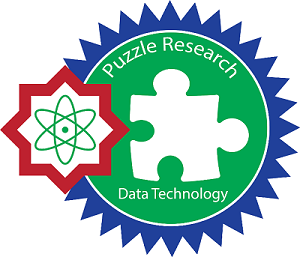ADDITIONAL MENU
Early Detection of COVID-19 Disease Based on Behavioral Parameters and Symptoms Using Algorithm-C5.0
Abstract
The spread of COVID-19 disease has continued since it was first discovered at the end of 2019 until now. Transmission of COVID-19 is very fast, including through close contact through droplets and through the air. Therefore, early detection of COVID-19 is very important for patients and also those around them to be able to fight the COVID-19 pandemic because if patients get proper and fast treatment, then other people around them will be protected. In this study, an analysis of the classification of decision making for COVID-19 detection was carried out based on behavioral parameters and symptoms that could trigger exposure to COVID-19 using the C5.0 algorithm, followed by measuring the performance of the model using the Confusion Matrix. The C5.0 algorithm is a decision tree-based data mining method. The results of the C5.0 algorithm use a comparison of training data and test data of 70:30. After going through the Confusion Matrix test, an accuracy value of 98% is obtained which indicates that the resulting classification is very good, so that the resulting model can be used for early detection of COVID-19 patients.
Keywords
Algorithm C5.0 Eearly Detection Classification Confusion Matrix
Full Text:
PDFReferences
Hafeez, A., Ahmad, S., Siddqui, SA, Ahmad, M., & Mishra, S. (2020). A review of COVID-19 (Coronavirus Disease-2019) diagnosis, treatments and prevention. Ejmo, 4(2), 116-125.
Khishe, M., Caraffini, F., & Kuhn, S. (2021). Evolving deep learning convolutional neural networks for early detection of COVID-19 in chest X-ray images. Mathematics, 9(9), 1002.
Sisodia, D., & Sisodia, DS (2018). Prediction of diabetes using classification algorithms. Procedia computer science, 132, 1578-1585.
Li, JP, Haq, AU, Din, SU, Khan, J., Khan, A., & Saboor, A. (2020). Heart disease identification method using machine learning classification in e-healthcare. IEEE Access, 8, 107562-107582.
Karthikeyan, T., & Thangaraju, P. (2013). Analysis of classification algorithms applied to hepatitis patients. International Journal of Computer Applications, 62(15).
Ramana, BV, Babu, MSP, & Venkateswarlu, NB (2011). A critical study of selected classification algorithms for liver disease diagnosis. International Journal of Database Management Systems, 3(2), 101-114.
Bujlow , T., Riaz, T., & Pedersen, JM (2012, January). A method for classification of network traffic based on C5. 0 Machine Learning Algorithms. In 2012 international conference on computing, networking and communications (ICNC) (pp. 237-241). IEEE.
Pang, SL, & Gong, JZ (2009). C5. 0 classification algorithm and application on individual credit evaluation of banks. Systems Engineering-Theory & Practice, 29(12), 94-104.
Kurniawan, E., Nhita, F., Aditsania, A., & Saepudin, D. (2019, July). C5. 0 algorithm and synthetic minority oversampling technique (SMOTE) for rainfall forecasting in Bandung regency. In 2019 7th International Conference on Information and Communication Technology (ICoICT) (pp. 1-5). IEEE.
Aesyi, US, Diwangkara, TW, & Kurniawan, RT (2020). Diagnosis of Hernia Disk Disease and Spondylolisthesis Using the C5 Algorithm. Telematics: Journal of Informatics and Information Technology, 16(2), 81-86.
https://www.kaggle.com/datasets/hemanthhari/symptoms-and-covid-presence
Huang, C., Wang, Y., Li, X., Ren, L., Zhao, J., Hu, Y., ... & Cao, B. (2020). Clinical features of patients infected with 2019 novel coronavirus in Wuhan, China. The lancet, 395(10223), 497-506.
Hui, DS, Azhar, EI, Madani, TA, Ntoumi, F., Kock, R., Dar, O., ... & Petersen, E. (2020). The continuing 2019-nCoV epidemic threat of novel coronaviruses to global health—The latest 2019 novel coronavirus outbreak in Wuhan, China. International journal of infectious diseases, 91, 264-266.
Mahase, E. (2021). Covid-19: Sore throat, fatigue, and myalgia are more common with the new UK variant.
Iacobucci, G. (2021). Covid-19: Runny nose, headache, and fatigue are the commonest symptoms of omicron, early data show.
COVID-19 National Incident Room Surveillance Team. (2020). COVID-19, Australia: Epidemiology Report 19 (Fortnightly reporting period ending 21 June 2020). Communicable diseases intelligence (2018), 44.
Wilson, RF, Sharma, AJ, Schluechtermann, S., Currie, DW, Mangan, J., Kaplan, B., ... & Gieryn, D. (2020). Factors influencing risk for COVID-19 exposure among young adults aged 18–23 years—Winnebago County, Wisconsin, March–July 2020. Morbidity and Mortality Weekly Report, 69(41), 1497.
DOI: http://dx.doi.org/10.24014/ijaidm.v6i1.22074
Refbacks
- There are currently no refbacks.
Office and Secretariat:
Big Data Research Centre
Puzzle Research Data Technology (Predatech)
Laboratory Building 1st Floor of Faculty of Science and Technology
UIN Sultan Syarif Kasim Riau
Jl. HR. Soebrantas KM. 18.5 No. 155 Pekanbaru Riau – 28293
Website: http://predatech.uin-suska.ac.id/ijaidm
Email: ijaidm@uin-suska.ac.id
e-Journal: http://ejournal.uin-suska.ac.id/index.php/ijaidm
Phone: 085275359942
Journal Indexing:
Google Scholar | ROAD | PKP Index | BASE | ESJI | General Impact Factor | Garuda | Moraref | One Search | Cite Factor | Crossref | WorldCat | Neliti | SINTA | Dimensions | ICI Index Copernicus
IJAIDM Stats










